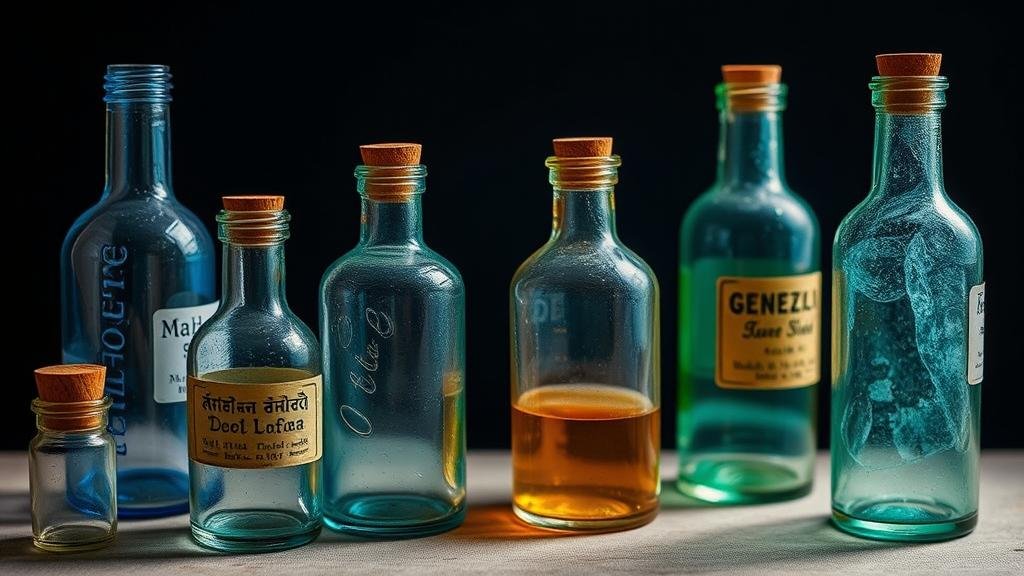Unearthing Unique Medicine Bottles in Early Sanitarium Sites
Unearthing Unique Medicine Bottles in Early Sanitarium Sites
The exploration of early sanitarium sites has revealed a wealth of historical artifacts, particularly unique medicine bottles, which serve as invaluable windows into the medical practices of the past. These remnants not only illuminate the types of treatments offered but also reflect the evolving attitudes towards health and wellness during the late 19th and early 20th centuries. This article delves into the significance of these artifacts, the context of sanitarium medicine, and the methodological approaches employed by researchers in unearthing these unique bottles.
The Historical Context of Sanitariums
Sanitariums emerged as critical health institutions during the late 1800s, primarily for the treatment of tuberculosis and other chronic illnesses. e facilities, often located in rural or mountainous areas, were designed to take advantage of fresh air and seclusion, which were believed to be vital for recovery. Pioneering figures such as Dr. Hermann M. Brehmer in Germany and Dr. Edward Livingston Trudeau in the United States emphasized rest, nutrition, and environmental factors as essential components of their treatment regimens.
- Dr. Brehmer established the first sanatorium in 1854 in the Silesian region, promoting an open-air approach to tuberculosis treatment.
- Trudeaus Adirondack Cottage Sanitarium, founded in 1884, became a model for later establishments, emphasizing natural therapies.
With the popularity of such institutions, a variety of medicinal products were utilized, leading to the proliferation of distinct glass bottles used for these remedies.
The unique design and typologies of medicine bottles from early sanitarium sites reflect the medical practices and aesthetic preferences of the time. Most bottles were not just functional; they were often intricately designed with embossed logos, color variations, and distinct shapes that indicated the contents or the manufacturer.
- Embossed bottles often featured the name of the medicine or the patent medicine manufacturer, which served both branding and informational purposes.
- Color variations–such as cobalt blue or amber–were employed not only for aesthetic appeal but also for their ability to protect sensitive contents from light degradation.
Notable examples include the “Bitters Bottles†that were commonly used during the late 19th century. These bottles, often associated with tonic and medicinal bitters, often featured elaborate designs that appealed to consumers seeking health benefits through alcohol-infused remedies.
Archaeological Methods in Recovery
The excavation of early sanitarium sites requires rigorous archaeological methods to ensure the preservation of these artifacts. Systematic digging techniques, including stratigraphy and careful soil profiling, help researchers date the contexts in which these bottles were found. Also, the application of analytical techniques, such as chemical composition analysis, can reveal the original contents of these bottles, deepening our understanding of their use.
Case Study: The Sanatorium at Saranac Lake
A prime example of successful recovery efforts is the excavation at the Trudeau Institute in Saranac Lake, New York. Researchers unearthed various medicinal bottles used in the sanitarium that indicate both the treatments provided and the socioeconomic status of the patients.
- Bottles marked with specific pharmaceuticals like “Syrup of Hypophosphites†highlight common treatments for tuberculosis.
- Luxury bottles, such as embossed “Cough Syrup†containers, suggest that higher-income patients had access to premium treatments.
This intersection of health, wealth, and material culture demonstrates the complex narratives that these bottles can unravel.
Significance of Medicine Bottles in Understanding Medical Practices
The medicine bottles unearthed from sanitarium sites provide essential insights into the medicinal practices of the period. The presence of specific drugs and tonics reveals the therapeutic approaches that were deemed effective at the time, capturing shifts in medical philosophy as well. For example, the reliance on botanical extracts in remedies points to the early foundations of herbal medicine, which has seen a resurgence in modern alternative health practices.
- The shift from natural remedies to chemically synthesized drugs in the early 20th century is exemplified in the transition of bottle design, reflecting changes in pharmaceutical production.
- The variety of medicinal claims linked to these bottles also mirrors the broader social context, highlighting consumer trust in advertised health benefits.
Conclusion and Actionable Takeaways
Unearthing unique medicine bottles in early sanitarium sites offers a profound opportunity to engage with our medical past. These artifacts serve as tangible connections to historical health practices, societal beliefs, and the evolution of pharmaceuticals. The examination of these bottles not only contributes to our understanding of the history of medicine but also encourages contemporary discussions about the implications of alternative and traditional therapies.
For scholars, historians, and enthusiasts, continued excavation and research into these artifacts promise to reveal further intricacies of human health and wellness practices. Evaluating these unearthed treasures in conjunction with both historical texts and modern health practices can provide a holistic view of our medical legacy. Future archaeological endeavors should prioritize interdisciplinary collaboration, combining archaeology, history, and medicine for a richer understanding of the past.



